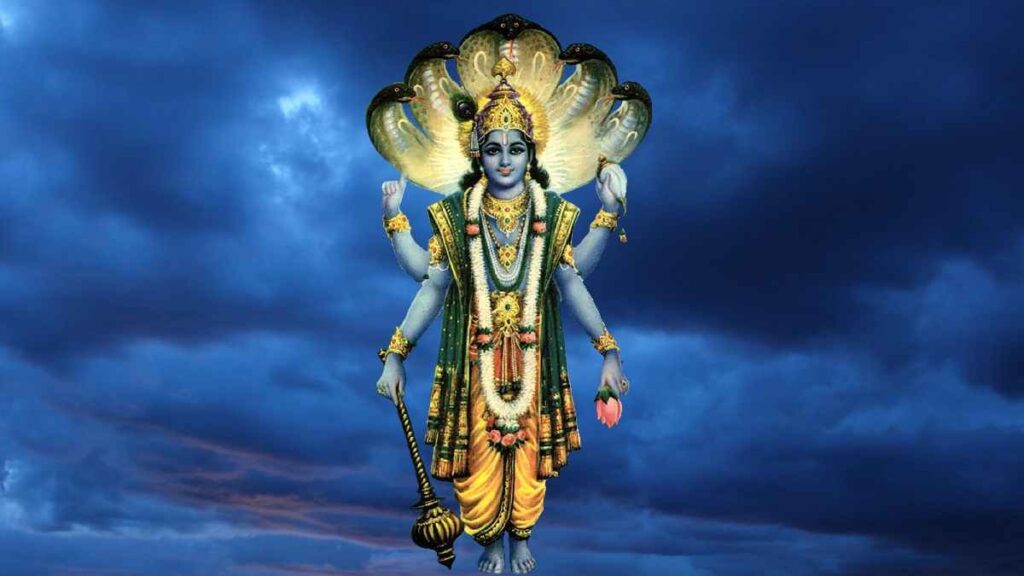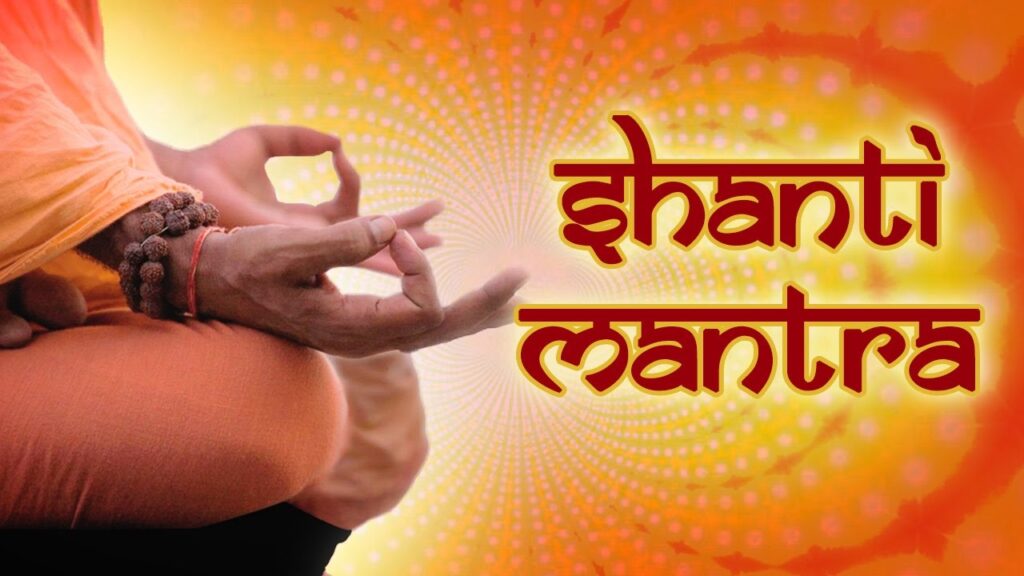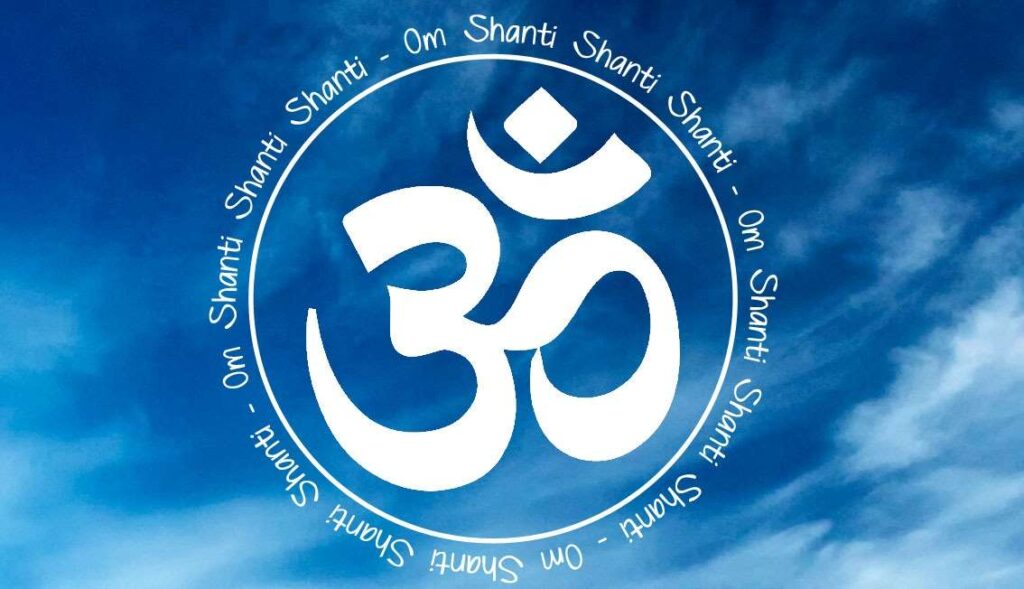Om Namo Narayanaya
“Om Namo Narayanaya” is an eight-syllable Sanskrit mantra (om – one, namo – two, narayanaya – five) most revered as the Narayana mantra. All Sanskrit mantras start with the auspicious syllable, Om or Aum.
It represents universal energy and is derived as the first spoken word revealed from the divine musical instrument of Lord Siva. It encompasses consciousness and leads to concentration on the object. Taken with a long breath it invokes prodigious concentration.
The second word “namo” epitomizes salutations to the Lord. The third word is a combination of two words “nara” (water) and “ayana” (resting place). The finer connotation of the mantra is “Salutations to Lord Vishnu”. If the mantra is repeatedly chanted with devotion, it will bring prosperity, mental peace, and positive vibrations in the chanter.
Mantra means, “manana trayate iti mantrah” (whose name is repeatedly recited as a mantra).
The origin of the Narayana mantra will be found in Yajur Veda as “Aum ithyagre vyaahareth nama ithi paschath. Narayanasa ethyuparishath. Aum ithyekaksharam. Nama ithi dhwe akshare. Narayanayethi Panchaksharani”. Etadvai narayanasyastaksaram padam.” It means Aum should be recited first, followed by Namah and Narayanaya. Aum is one syllable, Nama(ha) is two syllables and Narayanaya is five syllables and this is Ashtakshari mantra.
The Narayana Upanishad deals in detail with the highest aspect of Lord Vishnu as the supreme Lord and protector of the universe. Those who recite the mantra will attain a desired life without blemish. That person who meditates on the mantra will reach Vaikuntha. Lord is perennial.
Chanting of the Narayana Mantra
A mantra should always be initiated by the Guru to his disciples. While chanting the mantra invoked by the Guru, certain procedures are to be followed.
Each mantra has six segments.
- They are Rishi, who first witnessed the same,
- the second is, Chandas, the intonation in which the mantra is chanted,
- the third one is Devata, the deity of the mantra,
- the fourth one is Beeja, the essence of the mantra,
- the fifth one is Shakti, the power of the deity and
- the sixth is Kilka, the inner power in the mantra.
The chanter of the mantra after repeated chanting will get the power of the mantra and the darshan of God.
The Rishi for the Narayana mantra is Sadhya Narayana, Chandas is Gayatri, Deva is Maha Vishnu.
Revealing the Secret Mantra By Ramanuja
Ramanuja approached his guru, Gosthi Purna for initiating him the secret mantra. His guru made a condition that he should not disclose the mantra to any other person as the mantra is so powerful, sacred, and pure and should not be recited by any person who has a material interest.
The mantra provided to Ramanuja was the Narayana Mantra. Being kind at heart for removing pains of the humans, Ramanuja revealed this mantra to the commons from the Vishnu temple in Tirukkotiyur, even though it was against the dictum of his guru. He wanted all human sufferings must end by reciting this mantra.
Annamcharya in His Sankeerthanas
The doyen of sankeertanas has written one of the greatest songs on the Narayana mantra. The song starts with “Anni mantramulu neeve..”
He has vividly described how
- Narada chanted Narayana mantra,
- Prahalada the Narasimha mantra,
- Vibheeshana the Rama mantra,
- Dhruva Vasudeva mantra,
- Arjuna Krishna mantra, and
- sage Suka Vishnu mantra.
All these mantras are embedded in the Narayana mantra and Lord Venkateswara, the Vishnu himself is the pivotal God.
He finally said that this mantra is like moonlight. This composition is an eye-opener that to attain the Lord’s abode one need not take the root of panacea, but enough if one chants Narayana mantra.
Thirumangai Alwar’s Pasuram
Thirumangai Alwar in his Periya Thiurmozhi explained the greatness of this mantra in his pasuram.
The meaning of the pasuram is
“The Narayana nama will give to those who recite it, a high class, wealth, it will destroy all that cause suffering to His devotees, it will give them moksha, it will provide them His grace and the strength to remain in His anubhava, and give all good things that are sought by them. It does more than what a mother would do to a child. Thus, the Thirumanthra will provide all the good things that are sought by those who keep reciting it.”
Benefits of Reciting the Mantra
Those who chant the Narayana mantra will achieve all things and will be an elixir for all physical and mental evils. The chanter will benefit with a blissful life and attain salvation to reach the divine abode.
Rigveda says that Lord Vishnu is in charge of all senses, Gods, and powerful elements. Reciting his name would bring in the complete grace of the Lord to win over the evil.
The mantra provides succor from problems and enmity. It relieves from complex problems of life. By chanting this mantra one will be able to unfold the pervading power, mercy, and goodness of the Lord. It gives the chanter infinite happiness, love, glory, wisdom, and liberation from materialistic desires. It brings peace and aroma to the devotee.
Practicing the Mantra
Everyone must recite the mantra at least 108 times a day after completing the daily chores. It is more powerful if the number of recitations increases day by day.”Sankeertya Narayana sabdamatram vimukta dhukha sukhino bhavanti”.
Even if the mantra is recited once, the devotee is relieved of all worries and will lead a happy life.
Narayanaya nama ityayameva satyam |
Samsaara ghora vishasamharanayamantrah ||



